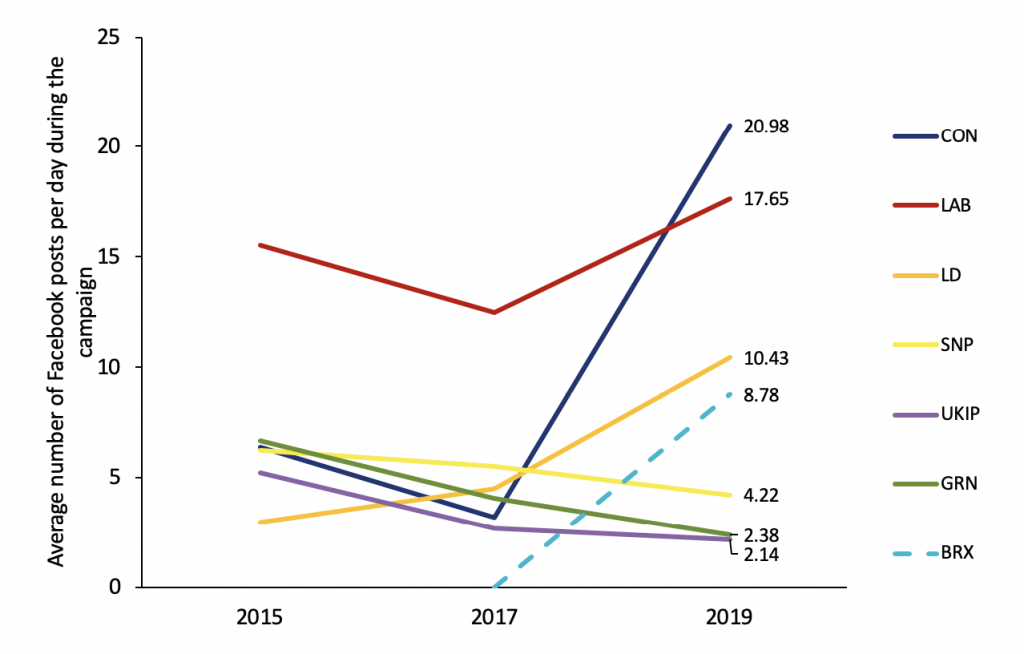
Dr Richard Fletcher
Senior Research Fellow and Research Team Leader, Reuters Institute for the Study of Journalism, University of Oxford
Email: richard.fletcher@politics.ox.ac.uk

Section 6: The Digital Campaign
- Digital campaign regulation: more urgent than ever?
- #GE2019 – Labour owns the Tories on Instagram, the latest digital battlefield
- Spot the difference: how Nicola Sturgeon and Jo Swinson self-represented on Twitter
- “Go back to your student politics”? Momentum, the digital campaign, and what comes next
- Taking the tube
- The politics of deletion in social media campaigns
- “Behind the curtain of the targeting machine”: political parties A/B testing in action
- Against opacity, outrage and deception in digital political campaigning
- The explosion of the public sphere
- Big chickens, dumbfakes, squirrel killers: was 2019 the election where ‘shitposing’ went mainstream?
It has now become almost trite to point out that the political conversation on social media is not representative of the public at large. For many people this was brought into sharp focus on the day after the election, as the scale of the Conservative victory seemed to be at odds with the mood online. Social media, then, isn’t a great way to take the temperature of the nation—but we should not lose sight of the fact that it is nonetheless seen as a useful way for parties to communicate with certain sections of the public.
That’s why social media was a key part of Labour’s election campaign in 2017. They posted more content, uploaded more videos, and generated more interactions than any of the other main parties. This didn’t necessarily translate into a meaningful increase in support for Labour, but when the Conservatives hired Sean Topham and Ben Guerin—two twenty-something consultants from New Zealand that worked on the successful Morrison campaign in Australia—it was taken as a sign that they would be taking social media seriously this time around.
So, did the Conservatives use social media differently in the 2019 General Election campaign? To explore this, I’ve used CrowdTangle—an online tool that allows users to monitor the output of Facebook pages—to access data about the output of the official pages of seven parties (Conservative, Labour, Liberal Democrats, SNP, Green, UKIP, and the Brexit Party) in the last three election campaigns. I’ve focussed on Facebook because it is regularly used by over two-thirds (67%) of the online population—making it the most widely-used social network in the UK.
The data show that the Conservatives massively increased their Facebook output in 2019 (see Figure 1). In the 2017 campaign they made an average of around 3 Facebook posts per day, but this rose to nearly 21 in 2019. Labour also increased their output slightly, from an already-high figure of around 12 Facebook posts per day in 2017, to nearly 18 per day two years later. The number of posts from both parties increased steadily over the course of the campaign, and surged in the final week, when the Conservatives averaged around 29 posts per day and Labour around 33.
The data in Figure 1 also suggest that the Liberal Democrats may also have changed their strategy in 2019, more than doubling their number of posts per day from around 4 to 10. The Brexit Party were close behind with around 9 posts per day (shown as a dashed line in Figure 1 because they did not exist in 2017), ahead of the SNP, Greens and UKIP, who all appear to have stuck with the same basic approach as last time.
However, even though the Conservatives pushed out more Facebook content than Labour during the campaign, this did not translate into more interactions (engagement with the content measured through the number of likes, comments, shares, etc). The Conservatives averaged around 74,000 interactions per day compared to Labour’s 80,000. This could be to do with the fact that both Labour voters and Facebook users tend to be younger—though it may simply be that the content from Labour was more engaging.
Video, which Labour utilised considerably more than the other parties in 2017, seems to have been less of a priority for them in 2019. In 2017, Labour made around 9 video posts per day, but this fell to around 5.5 in 2019. The amount of video from the Conservatives increased, but fell as a proportion of all posts. This may reflect the fact that video is no longer seen as a way to game the Facebook algorithm and springboard posts to the top of people’s news feeds.
Facebook is just one network, and, of course, posts are just one way for parties to communicate with social media users. Much attention will be focussed on the use of paid political advertising on social media in the coming months. And regardless of the format, it’s the message that is important. But it is clear that the two largest parties increasingly see social media as a way of getting their message across.

